“IT’S quite a liberating experience to explore the sea in such an immersive way, not weighed down by heavy equipment, seeing firsthand how amazing, yet also so delicate, the underwater world is,” related Riza Ornos on her first freediving experience, after recently joining the Iloilo Freedivers for a basic freediving course and an underwater cleanup.
Ornos is no stranger to subaquatic adventures, one of the founders of Iloilo-based environmental group EarthingPH and a licensed PADI (Professional Association of Diving Instructors) diver, but she’s rediscovered her love of marine exploration through freediving.
Also known as skin diving, freediving involves plunging into sea depths sans heavy breathing apparatus – like scuba gear – relying only on one’s ability to hold their breath underwater. Masks, snorkels, and fins are typically still used by free-divers, but the discipline counts more on a swimmer’s strong lungs then costly and hefty diving equipment.
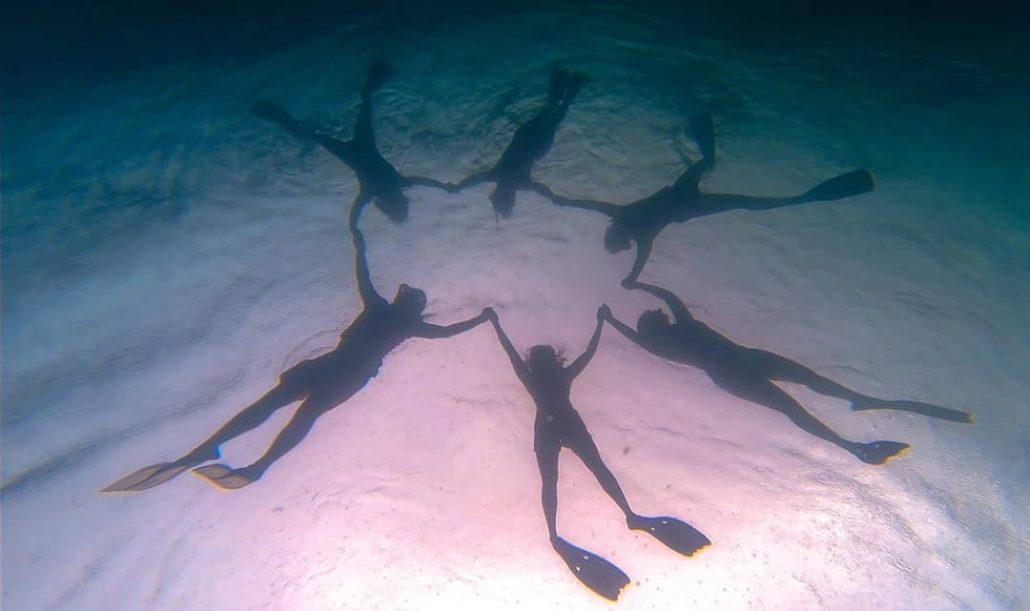
Freediving is not some newfangled water activity freshly introduced to the Philippines. Indigenous tribes in several regions of our archipelago have been freediving since the precolonial period, mostly to reap seafood – trawling the seabed for clams or oysters, and spearing fish – sometimes to farm and harvest pearls and semi-precious nacre. Most notable are the Badjaos of Mindanao, often also referenced as “sea gypsies” of the Sulu and Celebes seas.
Taking the plunge
Thirty-one-year-old Ansis Ivan Engalgado is one of the leaders of the Iloilo Freedivers, a group seeking to champion marine conservation and protection, by inspiring more love for the country’s oceans through freediving.
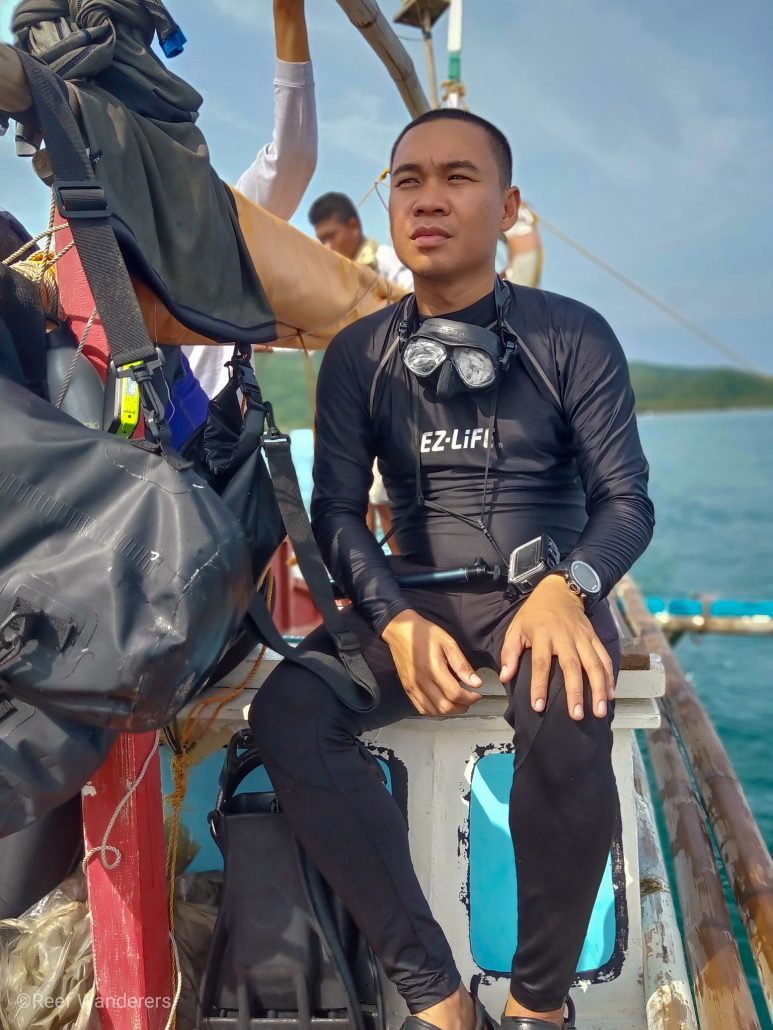
An accountant by profession, Engalgado recalls developing a love for swimming at a very young age – even as a kid, often attracted to splash around in the deep end of pools. As a teen, during beach excursions, he’d dare himself to swim further and further from the shore, acquiring a fondness for the depths. An adventure seeker at heart, in 2014 he finally decided to formally train in freediving in Cebu, at the age of 26.
Today the Igbaras, Iloilo-native Engalgado is a core member of the Iloilo Freedivers and one of the founders of Reef Wanderers, a non-profit organization that aims to promote diving and watersport activities as tools for raising awareness on the issues plaguing the coastal and marine environments of the country.
The Iloilo Freedivers and Reef Wanderers regularly hold cleanup activities in Western Visayas coastal areas, as well as mount reef monitoring and assessment efforts that aid the local government units of seaside towns to get a better handle on their ridge conservation and restoration efforts.
Engalgado and the Iloilo Freedivers collaborated with Swedish environmental advocate Robert Axelsson to organize a basic freediving course and cleanup activity in Cataan Cove, San Joaquin, some 60 kilometers southwest of Iloilo City.
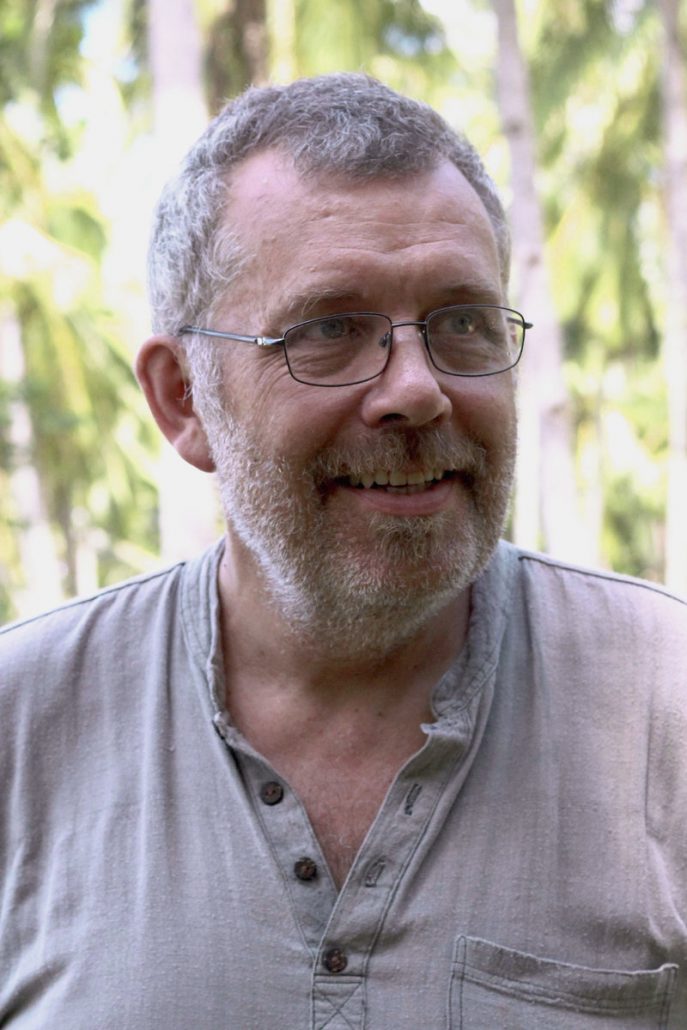
Alongshore San Joaquin proved fertile ground for the endeavor. The municipality has a string of 15 consecutive marine protected areas (MPAs) along its 25-kilometer stretch of coastline. Each of these MPAs have a two-hectare core “no take” zone where fishing is prohibited and human activity is limited. The local government has also implemented a regulated buffer zone in each of these sanctuaries.
The undertaking gathered a dozen or so beginner and intermediate swimmers – a diverse crew of artists, young professionals, and preservation champions – as the Iloilo Freedivers taught them the fundamentals of freediving, all the while lending the motley group an invaluable experience that could deepen their passion to take care of the environment.
“Diving is just another activity that highlights the beauty of the sea,” shares Engalgado. “In teaching more people about freediving, we are exposing more to the innate beauty of the sea, which will hopefully spur them to take care of our oceans better.”
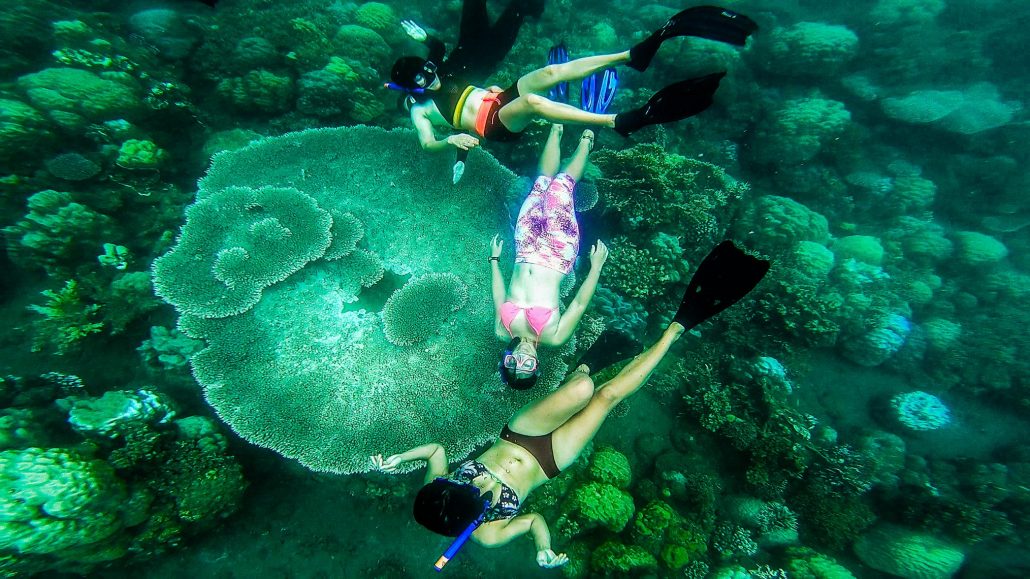

“When you connect firsthand with nature and learn more about its diversity, it lends to you a newfound understanding of the ecosystem, which usually inspires individuals to lessen any negative impact they may cause on the environment,” adds the Arboga, Sweden-based Axelsson, one of the founders of the Western Visayas Integrated Learning Centre in San Joaquin, Iloilo – also a climate change strategist at the County Administrative Board of Västmanland, Sweden.
Trawling for underwater debris
Cataan Cove, though now a marine protected area, has yet to fully recover from decades of misuse in the past. Both Axelsson and Engalgado remark that the area is hounded by siltation and overfishing, as well as the occasional sea debris and garbage.
“The reefs of Cataan suffer from many accumulated problems including historical overfishing, even the irreparable damage of massive dynamite fishing from many years ago remains noticeable,” related Axelsson, an alum of the Global Wellbeing Lab 2.0 led by MIT’s Presencing Institute.
“Locals say Cataan was once one of the nicest marine areas in the Philippines,” he adds. “The reef has slowly recovered with the implementation of its marine protected area status, but worrying signs like coral bleaching and scarce fish populations remain present.”
During the recent cleanup activity with the Iloilo Freedivers, the group recovered from Cataan’s reefs: old tires, discarded fishing line, and enough plastic bottles, tetra-packs, old flipflops, and other plastic rubbish to fill a sack.
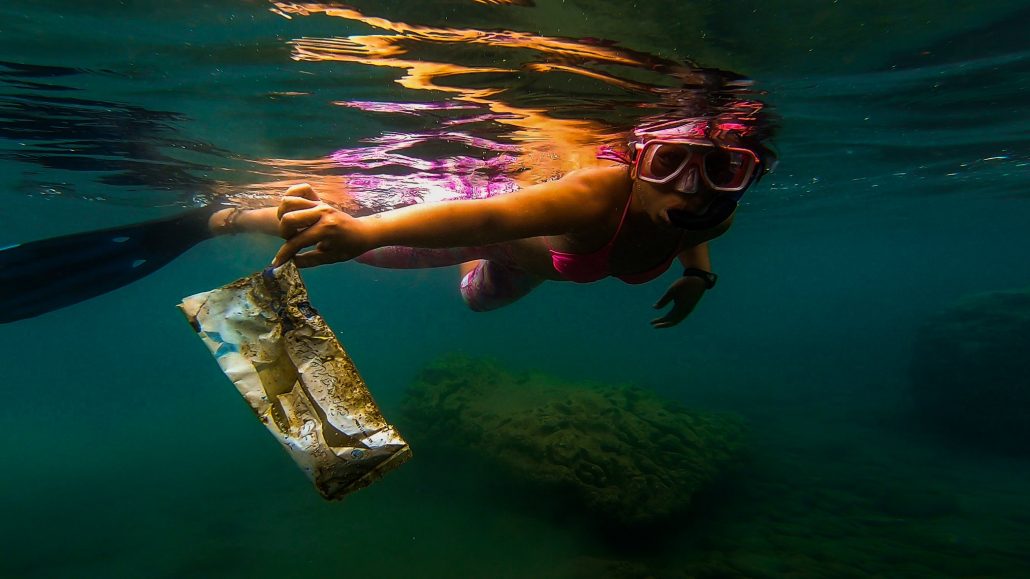
Freediving 101
The expert diver Engalgado recounts that the goal of a basic freediving course is to make a swimmer more comfortable in the open sea – beginners are most often first exposed to depths of 5 meters so they can acclimatize to the new underwater experience, before exploring deeper.
In teaching freediving to newbies, the trainers lower a rope that’s anchored to the seafloor so learners have something they can hold on to with ease during their descent – as well enabling instructors to pull novices back up above water quickly, in the event of an emergency.
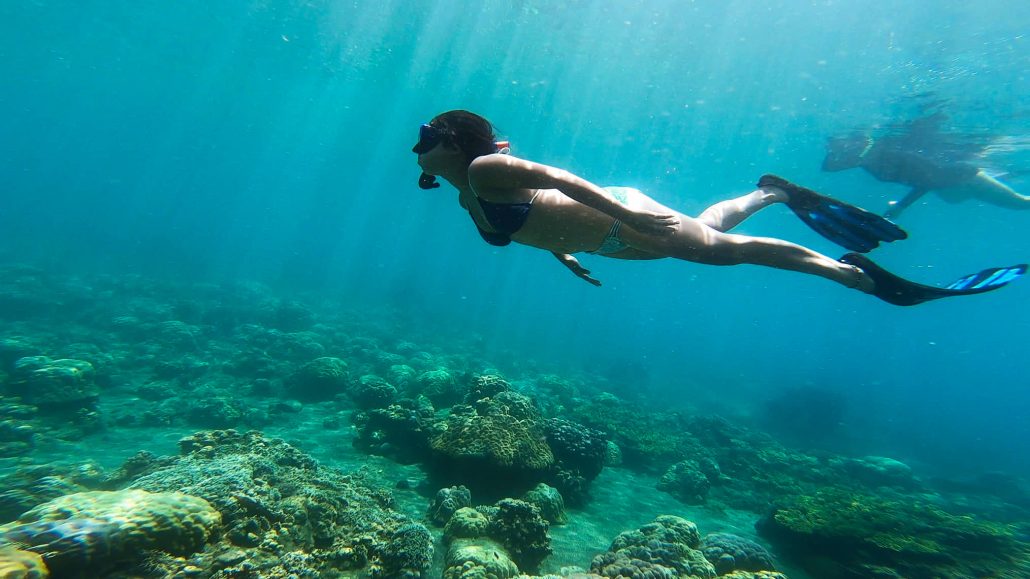
A few of the key elements of freediving are floating, relaxation, and safety, Engalgado explains. He particularly singles out relaxation, pointing out that in order to take deep and calm breaths before taking a plunge, a person has to feel at ease. Freediving focuses on the conservation of oxygen underwater and tense muscles consume heaps of oxygen and energy. To calm the nerves of freediving students, Engalgado teaches breathing exercises and relaxation techniques.
It is of course necessary to take a short course to fully understand all the basics of the watersport, but here the Iloilo Freedivers highlight other pointers you should remember when new to this activity: Never dive alone in every plunge, may it be shallow or deep, to ensure you have someone to safeguard your well-being; and never attempt freediving on your own for the first time, without the supervision of an accredited trainer.
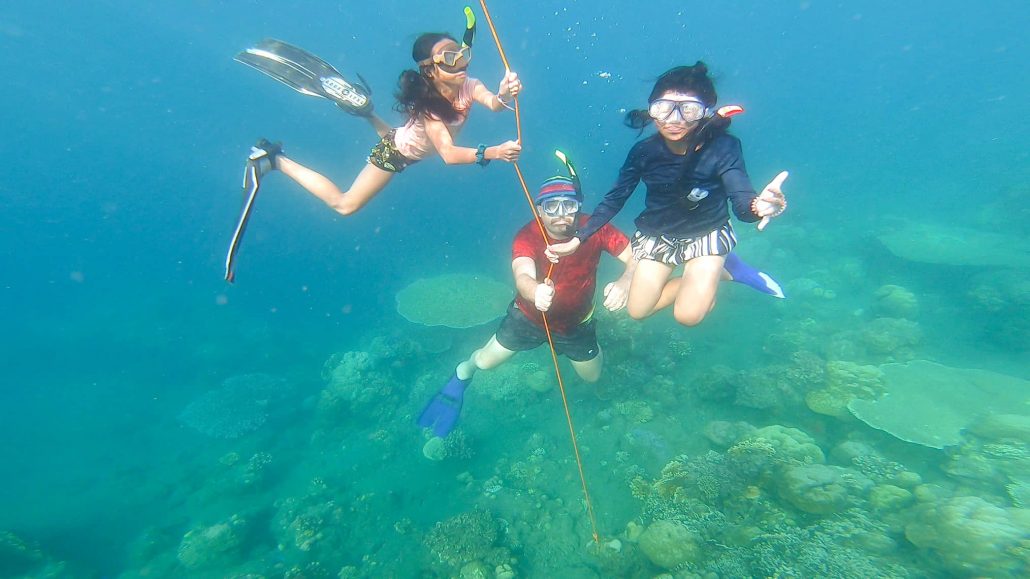
“For anyone who wants to experience underwater without digging a hole in your pocket, freediving is a good bet,” shares the new free-diver Ornos. “Unlike diving that requires you have so many equipment, freediving requires way less gear, just a mask, fins, a freediving buoy and the necessary safety knowledge.”
“This leisure activity will not only test your physical ability, but your presence of mind as well. However, once you are comfortable in the water, freediving almost just feels like flying, and in that moment you will feel most at one with the ocean.”
Ornos reveals that participating in the activity jointly spearheaded by Axelsson and Engalgado has renewed her drive to defend the environment, noting “how can you protect it, if you haven’t seen it or even experienced it.”
“Freediving has taught me humility, for am just a tiny speck of this awesome underwater universe. It taught me value every breath I take. Being one with the ocean made me love it even more, and protect it,” Ornos concluded./PN







